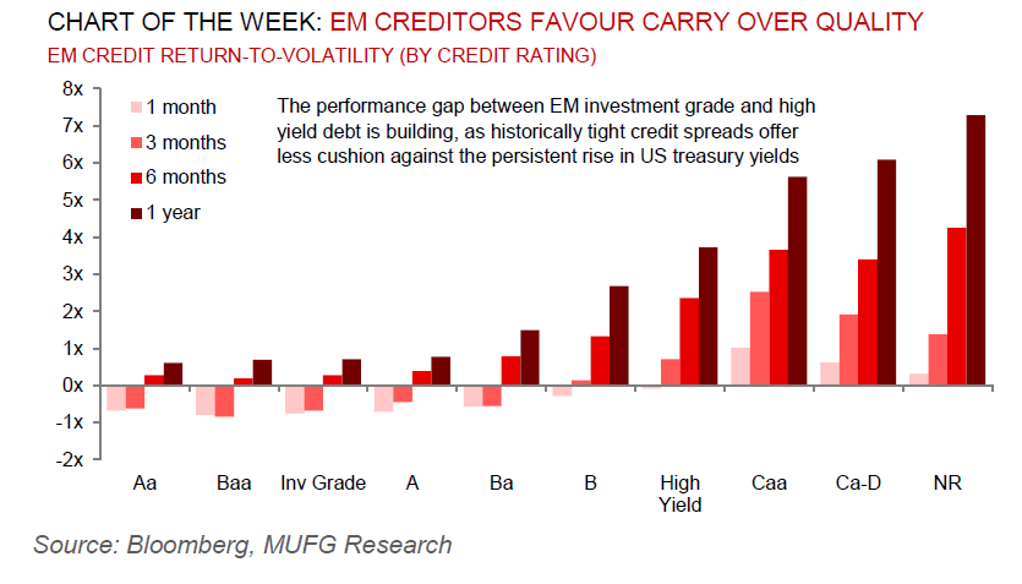Ten EM EMEA questions for 2025
EHSAN KHOMAN
Head of Commodities, ESG and
Emerging Markets Research –
EMEA
DIFC Branch – Dubai
T:+971 (4)387 5033
E: ehsan.khoman@ae.mufg.jp
SOOJIN KIM
Research Analyst
DIFC Branch – Dubai
T: +44(4)387 5031
E: soojin.kim@ae.mufg.jp
LEE HARDMAN
Senior Currency Analyst
Global Markets Research
Global Markets Division for EMEA
T: +44(0)20 577 1968
E: lee.hardman@uk.mufg.jp
MUFG Bank, Ltd.
A member of MUFG, a global financial group
Macro focus
In this edition of the EM EMEA Weekly, we examine what we consider to be the top ten questions for EM EMEA in 2025.
FX views
Emerging market currencies have remained under selling pressure at the start of the new calendar year. Rising US yields and stronger USD weigh on EM FX performance more than offsetting support from commodity price rebound. Fed rate cut expectations scaled back further ahead of releases of latest US CPI and PPI reports for December. HUF continues to underperforms amongst CEE3 FX. NBP to stick to hawkish guidance supporting PLN.
Week in review
Higher US yields, USD strength, rising oil prices and volatile risk sentiment have weighed on EM local rates since the start of 2025. The Saudi National Debt Management Centre (NDMC) published the annual sovereign borrowing plan for 2025. Headline inflation in Egypt fell to 24.1% y/y in December from 25.5% y/y in November, slightly higher than our expectations (24.3% y/y). The Bank of Israel (BoI) kept its policy rate unchanged at 4.50% in line with our (and consensus) expectations. The Oman Ministry of Finance (MoF) have pencilled in a OMR620m (1.5% of GDP) central government deficit in 2025.
Week ahead
This week will be a busy one for events across EM EMEA. There will be interest rate meetings in Romania (15 January) and Poland 16 January). A host of inflation readings for December will be released – Czech Republic (13 January), Romania (14 January), Hungary (14 January), Russia (15 January), Israel (15 January), and the final CPI print will be released in Poland (15 January). Finally, current account data for November will be released (13 January).
Forecasts at a glance
The external backdrop for EM has shifted abruptly – the soft-landing pro-risk environment and pricing of non-recessionary Fed cuts has given way to concerns around tariff risks (and likely retaliatory action), higher-for-longer US rates and a strong US dollar. This sets the stage for a challenging EM backdrop in 2025. There are dimensions that could make Trump 2.0 less disruptive. Given the reduced direct trade exposure of the Chinese economy to the US and expectations that there will be a monetary and fiscal response by Chinese policymakers to offset the tariff growth shock, the economic and financial market disruptions will, on aggregate, be less severe than Trump 1.0.
Core indicators
The latest weekly IIF flow data signalled that EM securities witnessed outflows of USD6.1bn in the week ending 10 January. The breakdown suggests that equities drove the outflows (USD6.1bn), whilst debt (USD0.0bn) were flat.


